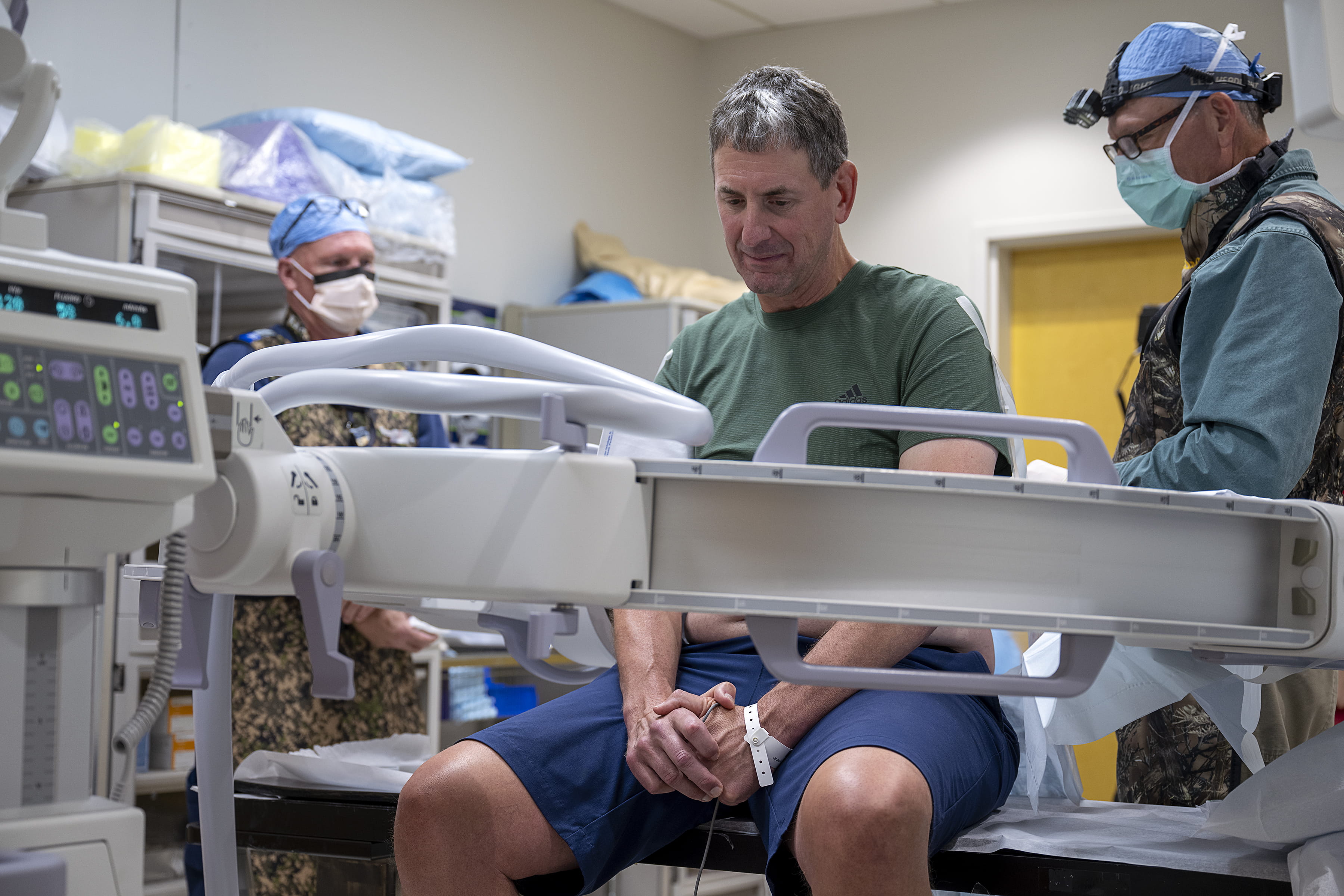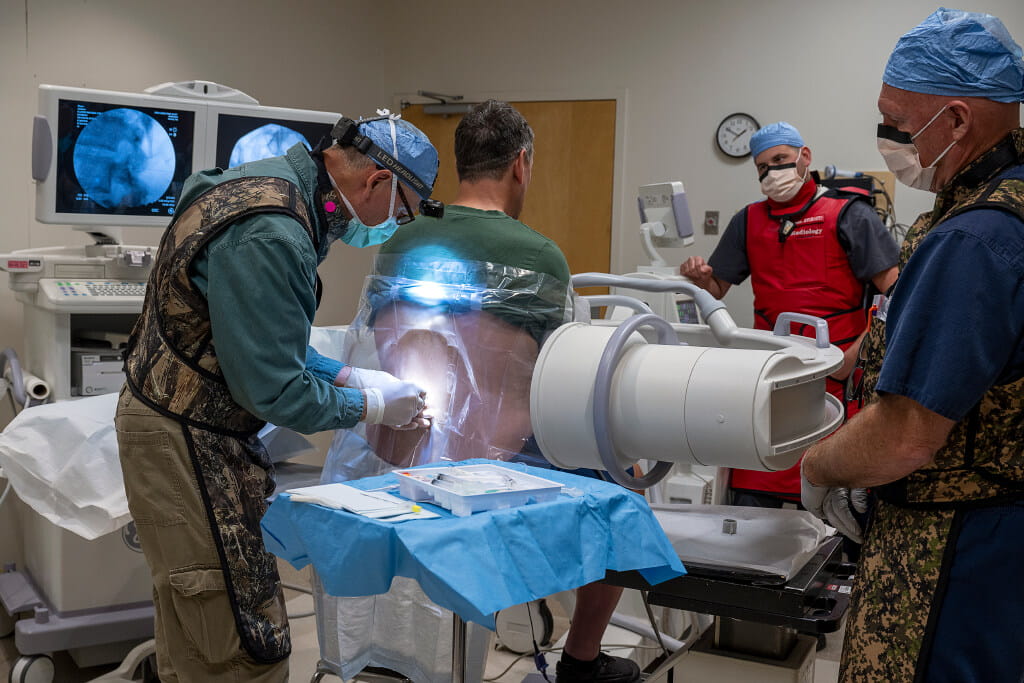September 7, 2023
COLUMBUS, Ohio – The Ohio State University Wexner Medical Center is one of the first nationwide to administer a targeted gene therapy for patients with a specific form of amyotrophic lateral sclerosis (ALS), a neurodegenerative disease that affects the cells in the brain and spine.
On April 25, the Food and Drug Administration (FDA) approved the use of tofersen, also known as QALSODY, in a small subset of adults with ALS who have a mutation in the superoxide dismutase 1 (SOD1) gene.
“Once ALS begins, it is relentlessly progressive. So the idea of this drug is that it is going to slow the rate of the progression of the disease. The whole idea of these medications is to slow, if not stop, the progression of motor neuron loss that's occurring. So there's a lot of excitement,” said Stephen Kolb, MD, PhD, professor of neurology and biological chemistry and pharmacology at The Ohio State University College of Medicine.
 Earlier this week, Andrew Wurm, 53, of Granville, Ohio, received his first dose during a 15-minute outpatient procedure at Ohio State’s Spine Center. Steve Severyn, MD, associate professor emeritus of anesthesiology at Ohio State, and his team administered the drug via an X-ray-guided lumbar puncture into his spinal fluid.
Earlier this week, Andrew Wurm, 53, of Granville, Ohio, received his first dose during a 15-minute outpatient procedure at Ohio State’s Spine Center. Steve Severyn, MD, associate professor emeritus of anesthesiology at Ohio State, and his team administered the drug via an X-ray-guided lumbar puncture into his spinal fluid.“There's going to be a period of loading doses. So in his case, he'll be back in two weeks. From there on, how many more loading doses are done, that's established by the treatment protocol,” Severyn said.
ALS is also called Lou Gehrig’s disease for the famous baseball who was forced to retire in 1939 because of the disease. It is a complicated and progressive disorder affecting more than 31,000 people in the United States, according to the Centers for Disease Control and Prevention.
 “With our increased understanding of the genetics of ALS, we now have a specific genetic target to treat, and we have the biological tools to actually hit that target. I think that there's a lot of reason for hope,” said Kolb, who is also director of the ALS/Motor Neuron Disease Multidisciplinary Clinic and Translational Research Program at Ohio State Wexner Medical Center. All patients at this clinic receive ALS genetic testing and counseling to match them with new treatments
“With our increased understanding of the genetics of ALS, we now have a specific genetic target to treat, and we have the biological tools to actually hit that target. I think that there's a lot of reason for hope,” said Kolb, who is also director of the ALS/Motor Neuron Disease Multidisciplinary Clinic and Translational Research Program at Ohio State Wexner Medical Center. All patients at this clinic receive ALS genetic testing and counseling to match them with new treatmentsAfter the initial loading doses, Wurm, who was diagnosed with ALS in October 2022, will return on a monthly basis to receive the gene therapy.
Wurm first noticed something was wrong in 2018 when he started falling and could no longer run half-marathons. As the disease has progressed, he has adjusted to completing some tasks more slowly and asking for help with chores like mowing the lawn. He relies on walking sticks to help him keep his balance, and he’s proud that he can still attend his children’s soccer games.
“If I can stabilize, and maybe get a little better and stay that way for a long time, that's a lot different viewpoint of where I'll be versus when I was first diagnosed,” Wurm said.
# # #
Media Contact: Eileen Scahill, Media Relations, Eileen.Scahill@osumc.edu
